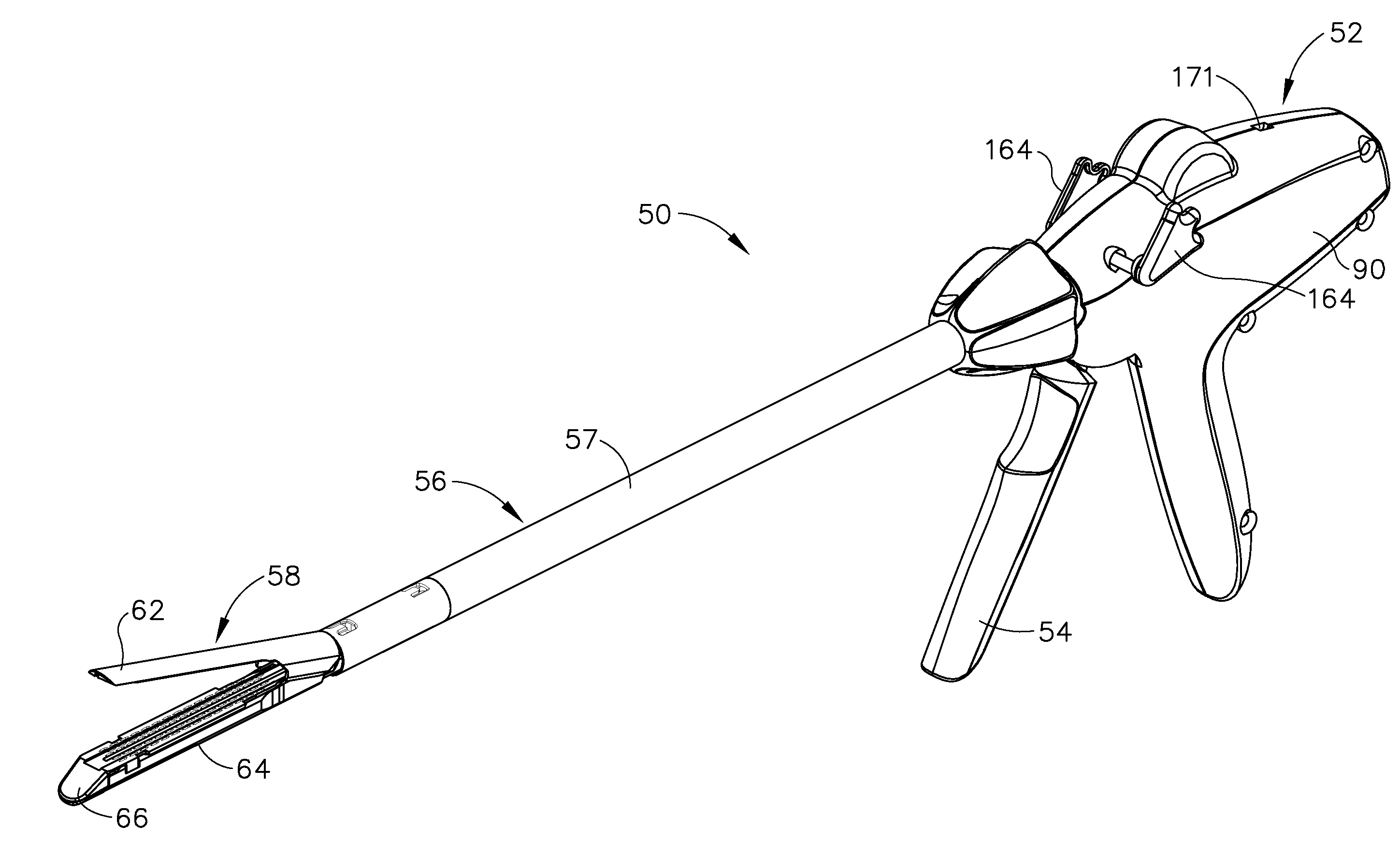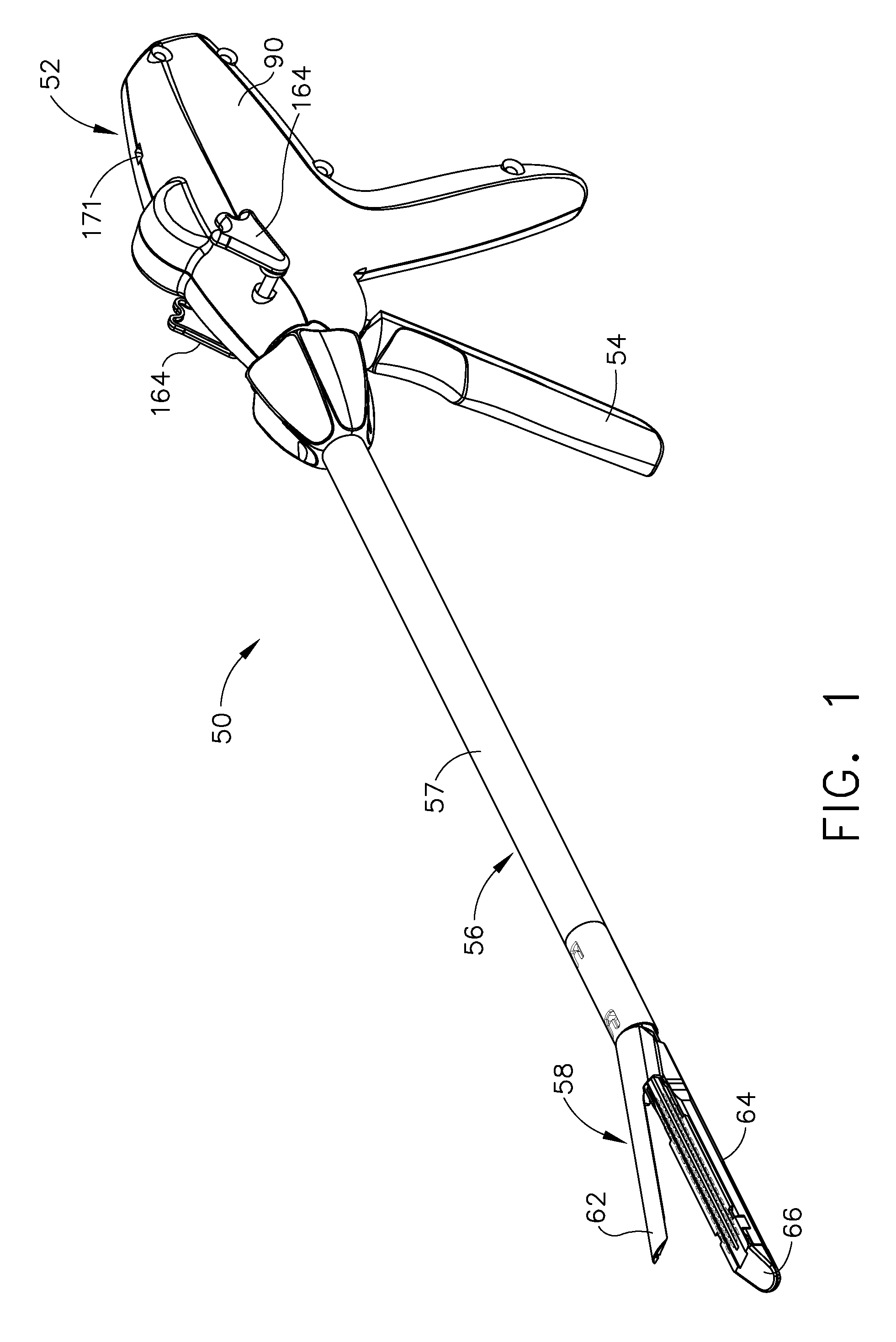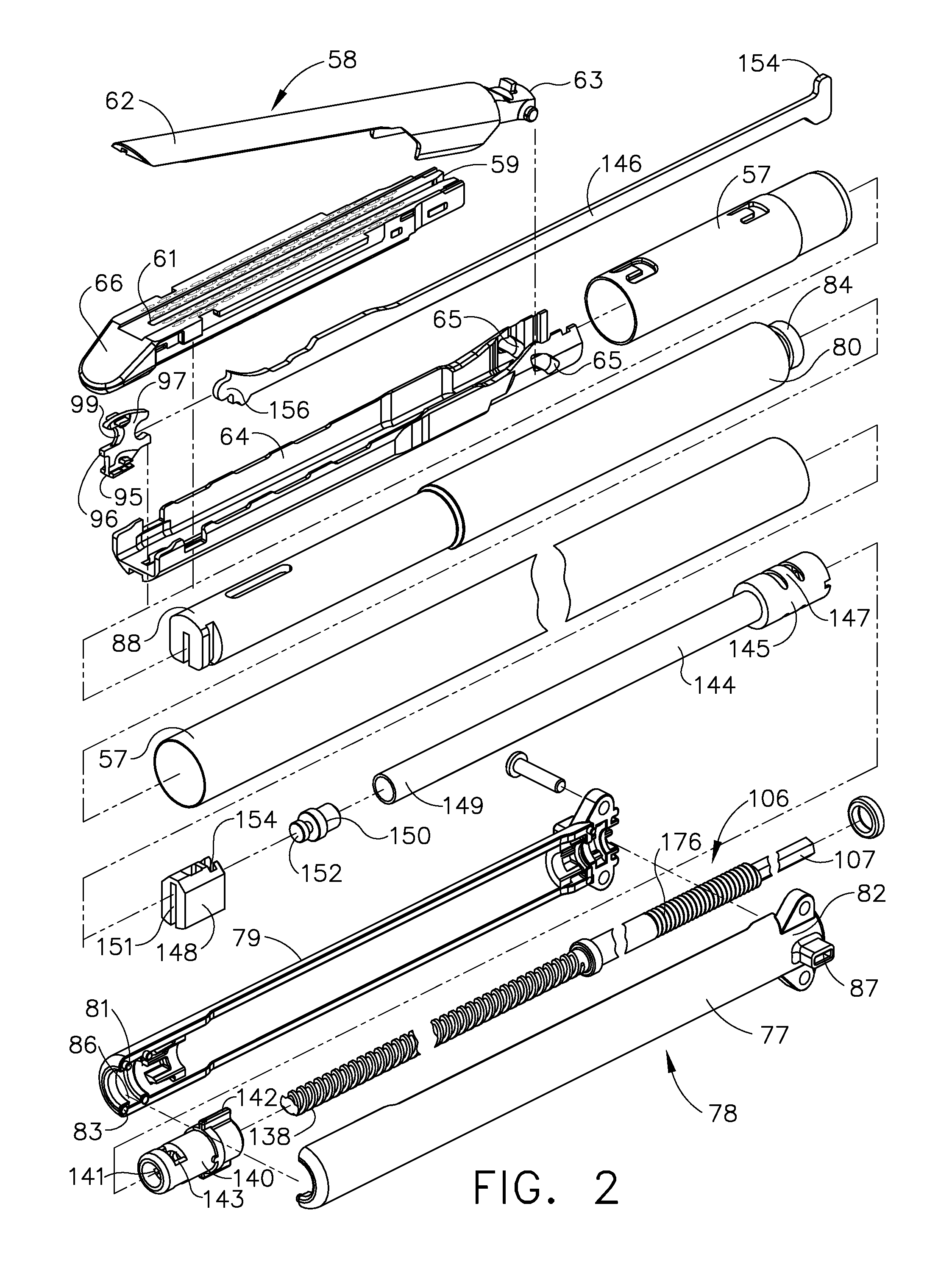Robotically-controlled shaft based rotary drive systems for surgical instruments
a robotic drive and surgical instrument technology, applied in the field of surgical staplers, can solve the problems of not affording the surgeon an opportunity, the device that performs both functions in the same trigger actuation is often exceedingly difficult to operate, and the surgeon is not able to partially retract the cutting member, etc., to achieve the effect of quick and convenient selection
- Summary
- Abstract
- Description
- Claims
- Application Information
AI Technical Summary
Benefits of technology
Problems solved by technology
Method used
Image
Examples
Embodiment Construction
Applicant of the present application also owns the following patent applications that have been filed on even date herewith and which are each herein incorporated by reference in their respective entireties:
U.S. patent application Ser. No. ______, entitled “Surgical Instrument With Wireless Communication Between a Control Unit of a Robotic System and Remote Sensor”, Attorney Docket No. END5924USCIP2 / 060339CIP2;
U.S. patent application Ser. No. ______, entitled “Robotically-Controlled Disposable Motor Driven Loading Unit”, Attorney Docket No. END6213USCIP1 / 070330CIP1;
U.S. patent application Ser. No. ______, entitled “Robotically-Controlled Endoscopic Accessory Channel”, Attorney Docket No. END5568USCIP2 / 100809CIP2;
U.S. patent application Ser. No. ______, entitled “Robotically-Controlled Motorized Surgical Instrument”, Attorney Docket No. END6416USCIP1 / 080205CIP1;
U.S. patent application Ser. No. ______, entitled “Robotically-Controlled Surgical Stapling Devices That Produce Formed Stap...
PUM
| Property | Measurement | Unit |
|---|---|---|
| distance | aaaaa | aaaaa |
| degree of force | aaaaa | aaaaa |
| torque | aaaaa | aaaaa |
Abstract
Description
Claims
Application Information
 Login to View More
Login to View More - R&D
- Intellectual Property
- Life Sciences
- Materials
- Tech Scout
- Unparalleled Data Quality
- Higher Quality Content
- 60% Fewer Hallucinations
Browse by: Latest US Patents, China's latest patents, Technical Efficacy Thesaurus, Application Domain, Technology Topic, Popular Technical Reports.
© 2025 PatSnap. All rights reserved.Legal|Privacy policy|Modern Slavery Act Transparency Statement|Sitemap|About US| Contact US: help@patsnap.com



